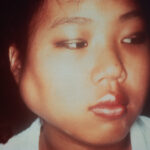For the participants who received dazodalibep, the change from baseline to day 169 in ESSPRI score (least-squares [LS] mean ± SE) was −1.80 ± 0.23, compared with −0.53 ± 0.23 for participants who received placebo, a difference of −1.27 ± 0.33 (P=0.0002). The change from baseline to day 169 in each of the three ESSPRI domains was significantly greater for the participants who received dazodalibep than those who received placebo: dryness, P=0.0066; fatigue, P=0.0022; and pain, P=0.0010. At day 169, a significantly larger proportion of participants treated with dazodalibep achieved at least a one point or a 15% reduction in ESSPRI compared with participants who received placebo (66.7% vs. 32.7%; P=0.008).
From baseline to day 169, the participants who received dazodalibep had significantly greater improvement in the Functional Assessment of Chronic Illness Therapy-Fatigue score (LS mean ± SE: 8.1 ± 1.4) than those who received placebo (2.8 ± 1.4; P=0.0095). At day 169, participants who received dazodalibep had greater numerical improvement in the Ocular Surface Disease Index (−14.0 ± 3.0 vs. −8.5 ± 2.9; P= 0.1936) and Patient’s Global Impression of Severity (−0.6 ± 0.1 vs. −0.4 ± 0.1; P=0.1781) than participants who received placebo. (Note: The Ocular Surface Index assesses dry eye symptoms and its effect on a patient’s vision within the prior week.5)
Seventy-five participants reported adverse events. Half the participants had received dazodalibep (37/54) and approximately half had received placebo (38/55). Most reactions were mild to moderate in severity. The most frequently reported adverse events in those who received dazodalibep were COVID-19, nasopharyngitis, anemia and diarrhea. There were three serious adverse events: pneumonia (influenza), post-acute COVID-19 syndrome (i.e., long COVID) and gammopathy. One participant who received placebo had neutropenia.
Investigators deemed all serious adverse events unrelated to the study medication. One participant who received dazodalibep and two participants who received placebo discontinued the study due to an adverse event, which was not defined in the abstract.
Conclusion
The primary end point was met in this phase 2 trial of dazodalibep therapy for patients with Sjögren’s disease with an unacceptable symptom burden and limited systemic organ involvement. Participants who received 1,500 mg of IV dazodalibep every two weeks for three doses and then every four weeks for an additional four doses had statistically significant and clinically meaningful improvement for key symptoms of Sjögren’s disease as measured by ESSPRI and Patient’s Global Impression of Severity when compared with placebo-treated participants.


